The Social Museum Collection at Harvard University

Harvard University's Social Museum was established in 1903 as part of the University's newly-formed Department of Social Ethics, devoted to the comparative study of social conditions and institutions in the United States and abroad. This website presents more than 6,000 images from the Social Museum's collection, including photographs, pamphlets, prints, and architectural drawings. Images are available though an extensive search function, with a keyword search, artist list (including photographers Lewis Hine and Francis Benjamin Johnston), and 37 topics (e.g. anarchism, charity, government, health, education, housing, Socialism, and war). Also available is an online exhibit that introduces three of the Social Museum's primary subjects of study: Poor Relief, Social Justice, and Industrial Betterment. This section can serve as an introduction for those unfamiliar with the progressive era and early 20th-century social reform movements in the United States and abroad.
African American Sheet Music, 1850-1920
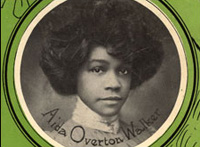
This collection presents 1,305 pieces of sheet music composed by and about African Americans, ranging chronologically from antebellum minstrel shows to early 20th-century African-American musical comedies. Includes works by renowned black composers and lyricists, such as James A. Bland, Will Marion Cook, Paul Laurence Dunbar, Bert Williams, George Walker, Alex Rogers, Jesse A. Shipp, Bob Cole, James Weldon Johnson, J. Rosamond Johnson, James Reese Europe, and Eubie Blake. A "Special Presentation: The Development of an African-American Musical Theatre, 1865-1910" provides a chronological overview that allows users to explore "the emergence of African-American performers and musical troupes, first in blackface minstrelsy, and later at the beginnings of the African-American musical stage in the late 1890s."
In addition, sheet music can be studied to examine racial depictions, both visually, on sheet music covers, and in lyrics; styles of music, such as ragtime, jazz, and spirituals; and a variety of topics of interest to popular audiences, including gender relations, urbanization, and wars. Includes a useful 80-title bibliography and 15-title discography. Much of the material is disturbing due to its heavy dependence on racial caricatures; however, students can gain insight into racial attitudes through an informed use of this site.
National Park Service, Teaching with Historic Places
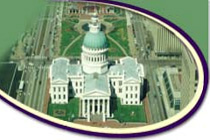
This useful site offers properties listed in the National Park Service's National Register of Historic Places as teaching tools for history, social studies, geography, or civics classes. It contains more than 75 "classroom ready" lesson plans that include maps, primary source readings, photographs and other images, discussion questions, activities, and projects.
The lesson plans can be browsed by location, theme, and time period, and all are based on sites listed in the National Register. The lesson plans are also arranged by featured topics for popular classroom subjects like Native Americans, women, the Civil War, and maritime history. For example, there are lesson plans for teaching Civil War and civilian memory using the Battle of Prairie Grove, Arkansas, and a plan for teaching about maritime history using the Fort Hancock site along the New York coast.
The plans cover all time periods in American history, but the site is particularly strong from the Civil War through the Civil Rights movement. An author's packet shows teachers how to devise new lesson plans using National Park Service properties. A "Professional Development" section offers a list of upcoming workshops and presentations as well as a bibliography of more than 150 National Park Service and other publications on teaching history with historic sites. Though the lesson plans are geared toward middle school students, they are easily adaptable to high school or college survey courses. This site is ideal for teachers looking for creative ways to bring historic sites into the classroom.
American Landscape and Architectural Design, 1850-1920
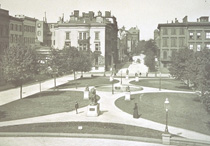
This Library of Congress American Memory site features more than 2800 lantern slides representing the work of American landscape and architectural designers from 1850 to 1920. The slides are drawn from the Frances Loeb Library, Graduate School of Design, Harvard University. Featured designers include Harvard Landscape and Architectural faculty members Frederick Law Olmsted, Jr., Bremer F. Pond, and James Sturgis Pray, as well as other American designers like Charles Downing Lay and M.S. Sayer. Images include views of cities, buildings, parks, estates, gardens, and houses throughout the country. Information on the location, source, collection, date, and repository of the original image accompanies each slide. Also included on the site are facsimiles of 275 building and garden plans, 219 maps, and eight models of various locations. Brief (roughly 500-word) essays and over 20 images outline the work of Charles Downing Lay, M.S. Sayer, and Frederick Law Olmsted. The site also offers a bibliography of 11 works related to photographs of architecture and landscape design; a 1000-word essay with 18 photographs of Harvard buildings from 1860 to 1905; and a 750-word essay on the history and manufacture of lantern slides. This site provides a variety of images for those interested in examining American architecture and landscape design in the late 19th and early 20th centuries.
Photographer to the World-The Detroit Publishing Company
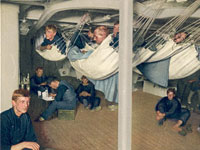
Based on an exhibit of the same name, this website provides a look at the Detroit Publishing Company (DPC) photographs of the Western United States from 1895 to 1924. The site is arranged for easy browsing into nine sections: DPC History, "How did they do it?," Cityscapes, Everyday Life, Foreign Views, Getting Around, Michigan Views, Nature, and Workplace; and each section contains 24 to 38 photographs. The first section covers the early years of the company and provides information about DPC photographers and the creation and distribution of pictures. The everyday life photos include images of cowboys shooting craps, children in Chinatown, and an African American Emancipation Day celebration in Richmond, VA. The foreign views section consists of snapshots taken in Mexico, Venezuela, the Bahamas, and Switzerland. Roughly 40 photographs focus on the state of Michigan. The nature images, the most popular of the company's photographs, are majestic and many of them fed the growing tourist industry. The section of workplace images rounds out this site and includes harvest scenes, loggers in Michigan, smelters, oyster pickers in Louisiana, and cotton gin workers. For those interested in the history of photography, this easily navigable site is a valuable resource.
Civil Rights Oral History Interviews: Spokane, Washington
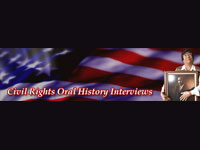
Produced as a part of a series of articles on black history titled "Through Spokane's Eyes: Moments in Black History," this site is a civil rights oral history project organized around the memories of men and women from Spokane, WA. Visitors can listen to of eight oral history interviews. They include an account by Jerrelene Williamson who compares the civil rights movement in Spokane to events in Alabama. Like most of the interviews, Williamson's dialogue is approximately 10 minutes in length. Emelda and Manuel Brown discuss their experiences with racial prejudice within the context of raising a family in Spokane in the 1960s. Their interview (32 minutes) is the second longest within the collection. Like many others within the project, Clarence Freeman shares his remembrances of the assassination of Dr. Martin Luther King. Sam Minnix and Verda Lofton describe the local civil rights demonstrations, and Flip Schulke recounts his experiences as a photographer in the south during the 1960s. His interview includes a discussion of James Meredith's admission into the University of Mississippi and at 45 minutes, is the longest. Alvin Pitmon talks about the desegregation of Arkansas schools and Nancy Nelson sings two civil rights spirituals, "My Lord, What a Morning" and "Let Us Break Bread Together."
A search engine allows users to search interviews by keyword and across database topics. This site will be of great interest to those interested in the history of civil rights in the United States.
National Postal Museum
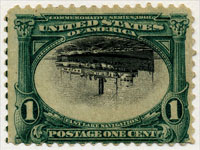
Divided into six galleries, this website features 21 online exhibits. The first gallery, Binding the Nation, includes six exhibits such as "The Post and the Press" and "Moving West" which explains how the postal service contracted with stagecoach lines to transport mail across the frontier. The second gallery, Customers and Communities, uses a series of exhibits to examine the development of mail delivery to the growing urban and rural populations in the 20th century. For example, through a virtual tour of the "Mail by Rail," visitors learn about the revolutionary Railway Mail Service. Moving the Mail is the third gallery, with three exhibits, and Art of Cards and Letters, the fourth gallery, spotlights the important role mail has held as a medium for personal communications, including "Undercover: The Evolution of the American Envelope." The fifth gallery, Artistic License comprises six exhibits; and the last, the Philatelic Gallery, includes exhibits entitled "Rarities Vault" and "Inverts." This gallery also features changing exhibits featuring special objects from both the Museum and private collections, including an online version of "Mail to the Chief," a collection of original drawings by Franklin Roosevelt of the many stamps he designed.
There are also two research guides online for the Benjamin B. Lipsner Airmail Collection and for the 1847 Federal Postage Stamp Correspondence. An Activity Zone offers materials for young students and free downloadable curriculum guides (grades K through college level) are available for teachers. The 24 online articles from EnRoute, the National Postal Museum's membership magazine, complete this rich site.
Urban Planning, 1794-1918: An International Anthology
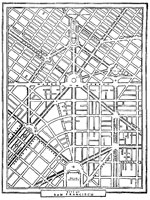
This site contains the full text of the 185 primary documents, roughly a 600-page book, dealing with urban planning. Dozens of journals, conference reports, books, official documents, and other sources are easy to navigate. In addition to the key word search engine, the site includes a topical bibliography that provides more than a dozen headings, and alphabetical and chronological bibliographies. Each entry also has a link to the full text of the document. Essays discuss a broad range of issues, including surveys of the state of urban planning, discussions of how urban improvements should be made, and details of the legal issues of land use regulations. Each document includes a brief (about 1,000 words) general introduction that sets the material in historical perspective. The selections on the site include Frederick Law Olmstead's commentary on the City Beautiful movement and continue to his son's discussion of housing developments in 1919. This site will prove useful to anyone concerned with urban planning or urban history and especially valuable to those studying how urban planning developed through World War I.
Murphy and Bolanz: Block and Addition Books, Dallas County 1880-1920
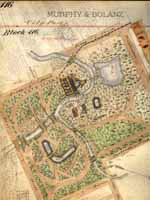
The Murphy and Bolanz Company, a Dallas real estate firm established in 1876 that was the official mapmaker for the City of Dallas, produced a set of maps that are detailed and rare. This site, made possible by a grant from the Texas State Library and Archives Commission, is an online version of the Murphy and Bolanz maps, a nine-volume collection of approximately 3,500 maps. Although currently only three of the volumes are available through the site, all nine will eventually be digitized. The voluminous collection consists of details of each block in Dallas and some of the surrounding suburban towns, including original maps of most towns and communities in Dallas County from the 1880s to the 1920s. These maps contain layouts for neighborhoods, the name, and date of original property owners, as well as sites of early schoolhouses, streetcar lines, businesses, and parks. Users will find African-American, Jewish, and Catholic cemeteries depicted on the maps and the sites of early Dallas businesses, such as Neiman Marcus, Sanger Brothers, and Adolphus Hotel.
The site is searchable by index or by street name, personal name, building name, railroad, or geographic feature. This unique online collection holds enormous research potential for historians and genealogists, but also for preservationists who will value the abundance of architectural and structural information and for legal researchers who will find the early property ownership details indispensable. The maps are also a great resource for geography teachers and students.
